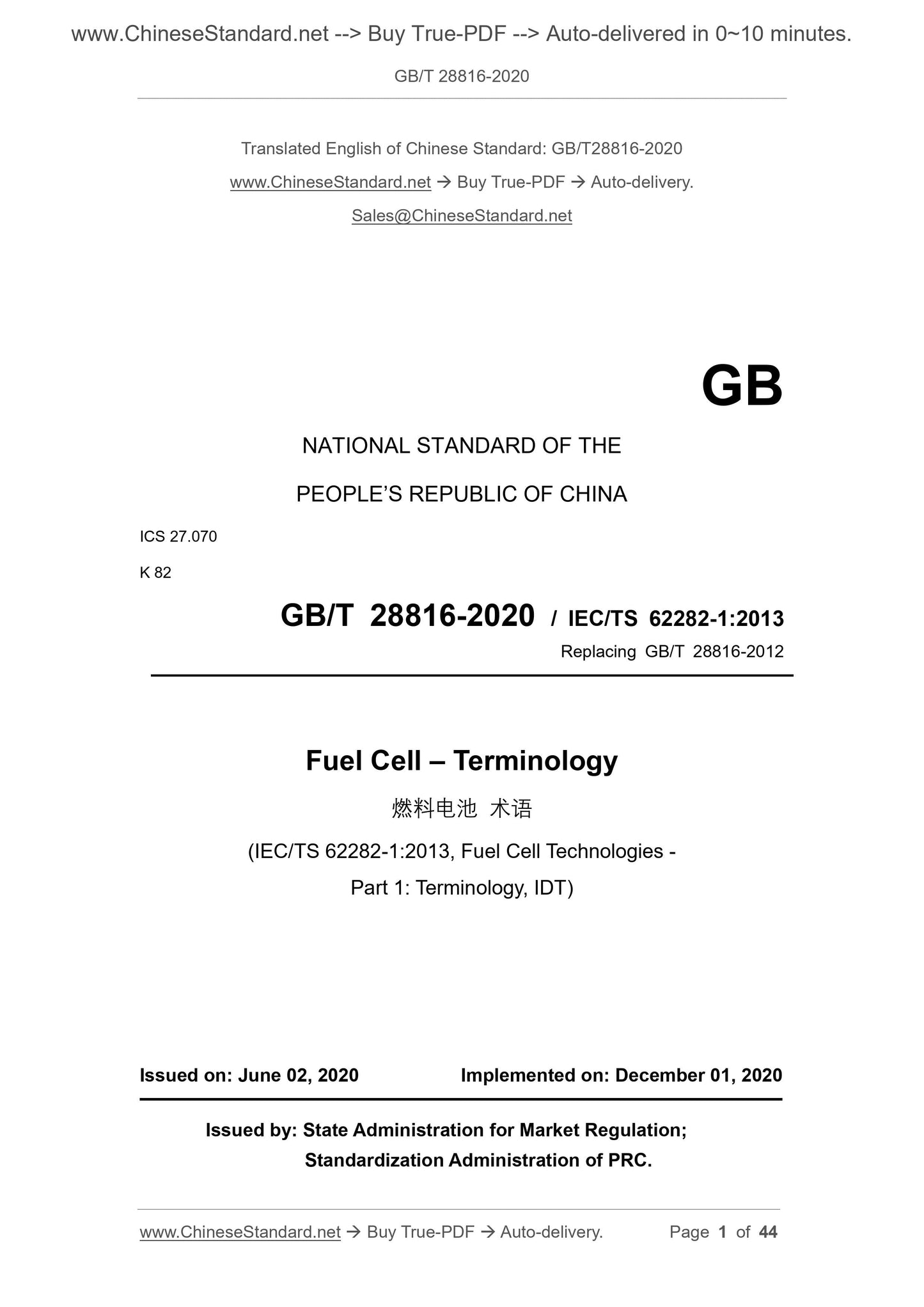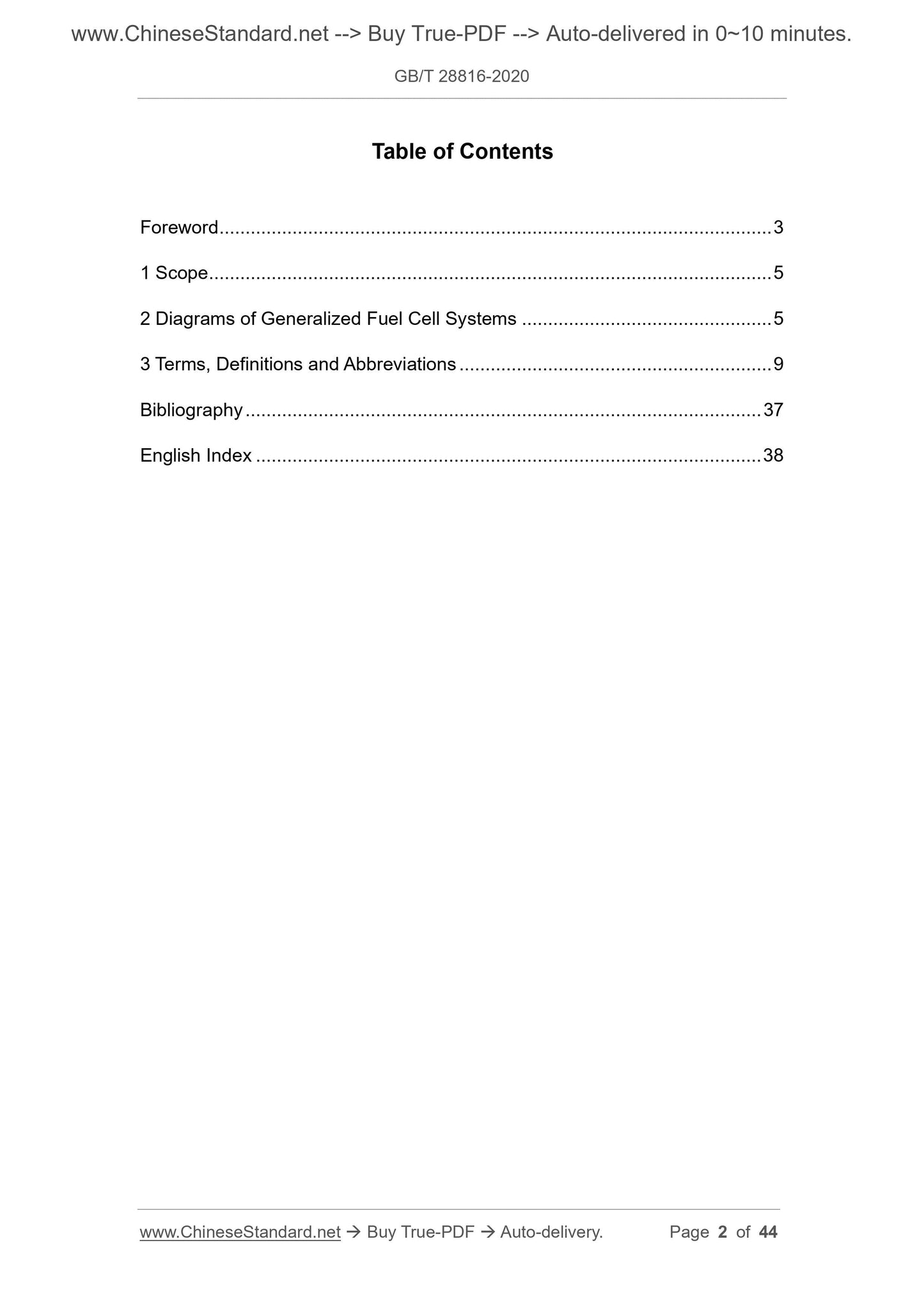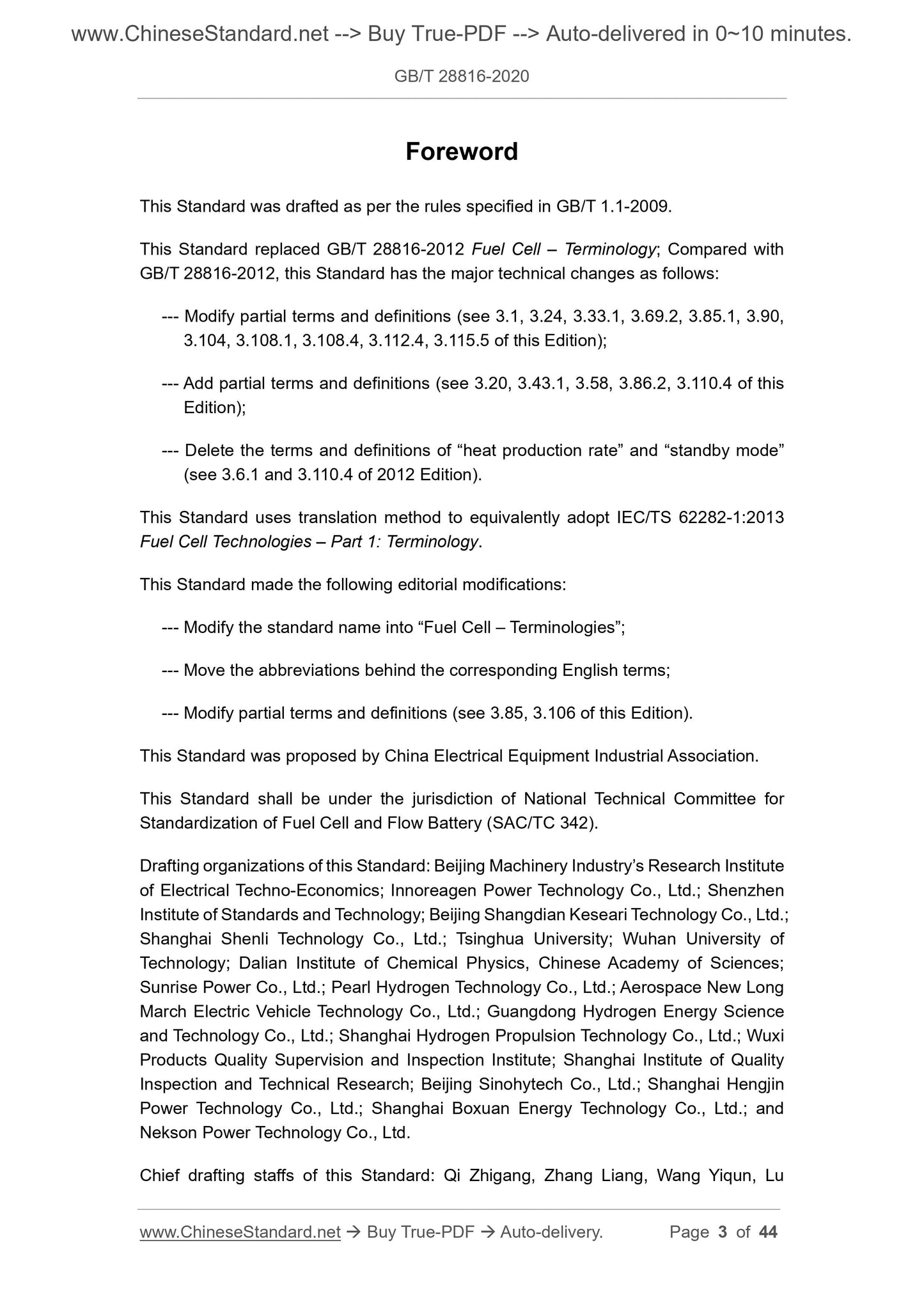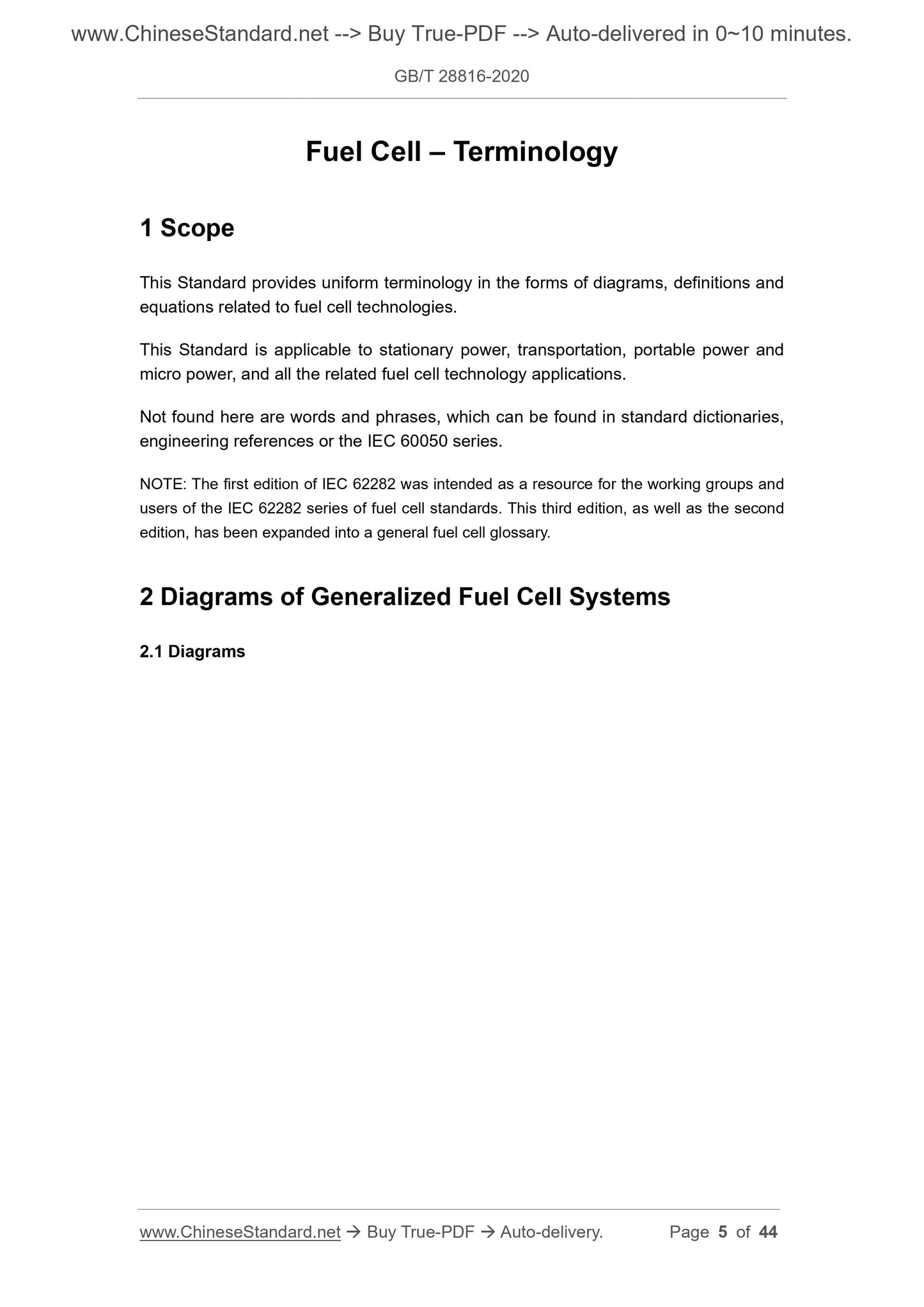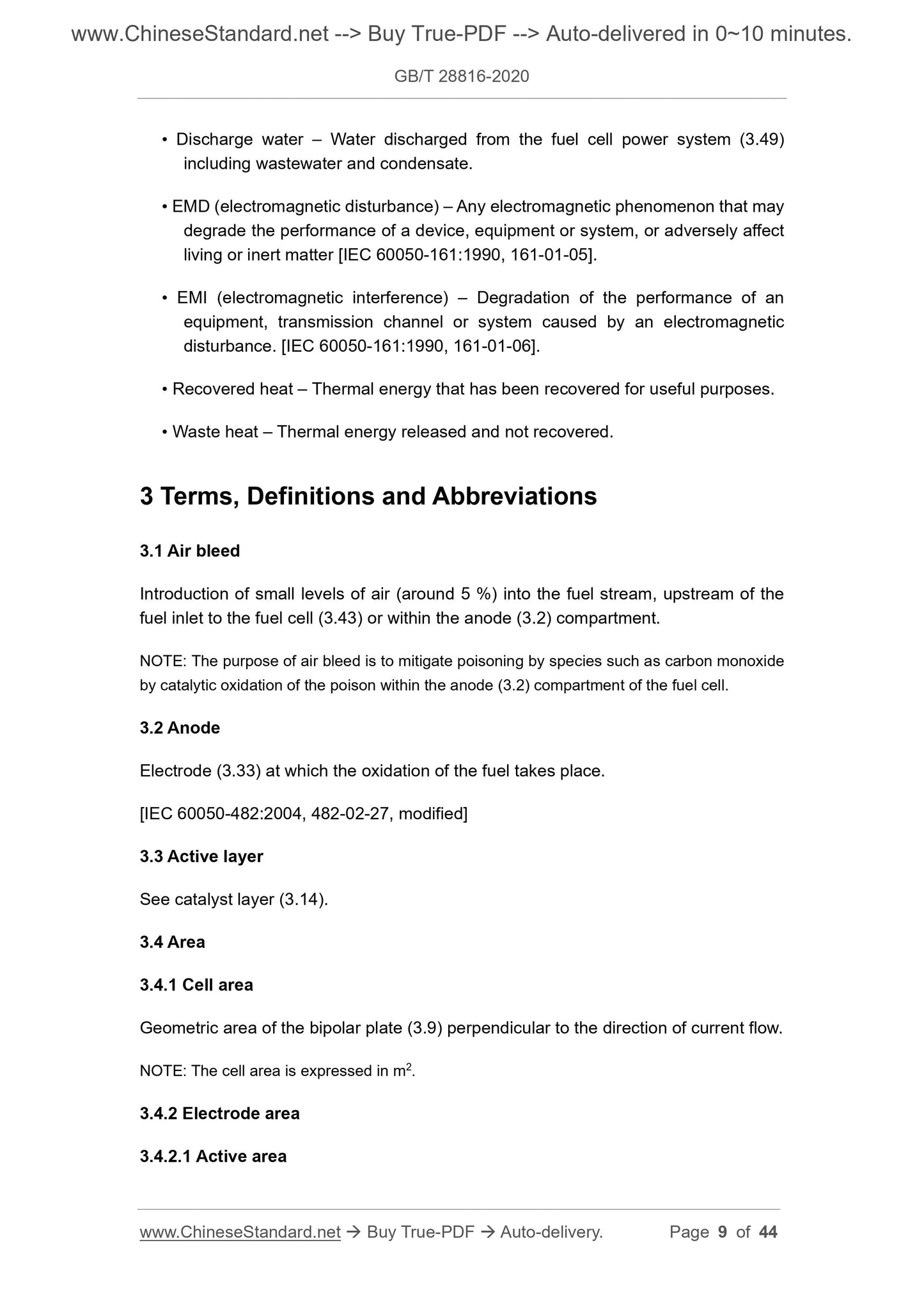1
/
of
5
www.ChineseStandard.us -- Field Test Asia Pte. Ltd.
GB/T 28816-2020 English PDF (GB/T28816-2020)
GB/T 28816-2020 English PDF (GB/T28816-2020)
Regular price
$465.00
Regular price
Sale price
$465.00
Unit price
/
per
Shipping calculated at checkout.
Couldn't load pickup availability
GB/T 28816-2020: Fuel cell--Terminology
Delivery: 9 seconds. Download (and Email) true-PDF + Invoice.Get Quotation: Click GB/T 28816-2020 (Self-service in 1-minute)
Newer / historical versions: GB/T 28816-2020
Preview True-PDF
Scope
This Standard provides uniform terminology in the forms of diagrams, definitions andequations related to fuel cell technologies.
Basic Data
| Standard ID | GB/T 28816-2020 (GB/T28816-2020) |
| Description (Translated English) | Fuel cell--Terminology |
| Sector / Industry | National Standard (Recommended) |
| Classification of Chinese Standard | K82 |
| Classification of International Standard | 27.070 |
| Word Count Estimation | 38,333 |
| Date of Issue | 2020-06-02 |
| Date of Implementation | 2020-12-01 |
| Issuing agency(ies) | State Administration for Market Regulation, China National Standardization Administration |
Share
